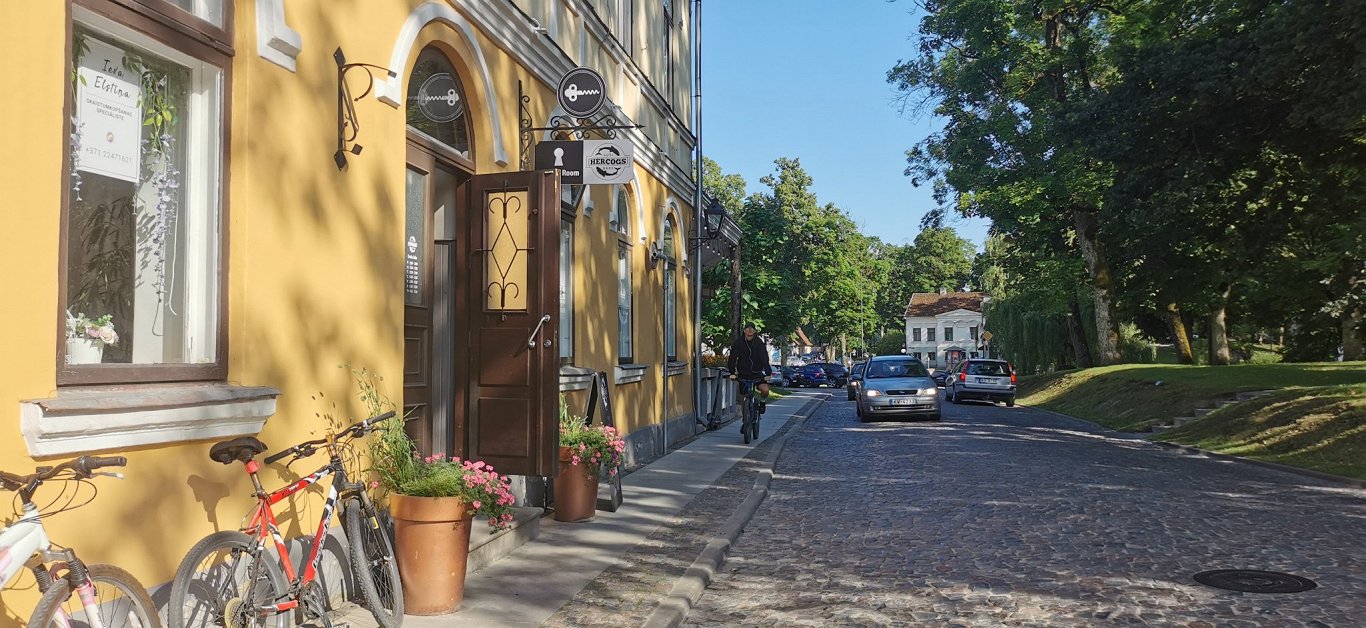Architectural Culture Stories
From September 24 to 27, the European Heritage Days will take place in Latvia, the subject of which is architectural culture this year. The National Heritage Board has compiled more than 30 examples with valuable history, construction, restoration. On LSM, we present the stories of these sites, as told by Latvian architectural and cultural heritage experts.
The story of Kuldīga is told by architect Zaiga Gaile.
Every spring, people flock to Kuldīga, the former capital of Kurzeme (Courland), to witness fish jumping up the Rumba waterfall on the River Venta. For centuries, fish, particularly the vimba bream, have been swimming upstream the River Venta to spawn -and their swim is interrupted by Ventas Rumba.
Ventas Rumba, at 100 meters in width, is the widest waterfall in Europe. In height, though, the waterfall only stands at two meters, so the silvery fish try to jump it. Surrounded by the burbling sound of the waterfall, people gather on the massive bridge, even jump from one wet stone to another to get a closer look.
In summer, it is worth going for a swim in the Rumba waterfall.
Having enjoyed themselves, people disperse in the town’s winding streets and meet at the taverns around the Town Square. The arrival to the scenic town itself is fabulous — the 19th century bridge across the River Venta leads right to the center of the old town. Between streets of cobblestone runs a small and swift stream - Alekšupīte. The majestic tower of St Katrīna Church stands on a hill overlooking the town.where between the cobblestone streets and wooden and stone houses a small, but swift River Alekšupīte runs.
Kuldīga, historically know as Goldingen, is a 12th century settlement on the banks of the River Venta. Kuldīga started to flourish in the 17th century during the rule of Duke Jakob Kettler when the town grew into an industrial trade center which supplied locally made products not only in the Duchy of Courland, but also abroad. Crafts, timber, iron, wool products, tanning, and soap making developed on an impressive scale. During fairs, the Town Square was a beehive – full of people, carts and products.
In 2003, Kuldīga old town was added to the UNESCO World Heritage Tentative List of Latvia. A stone tablet was buried in the Town Square. With admirable tenacity and patience, the senior officials of the Town Council, supported by President Egils Levits, are working towards including the town of Kuldīga in the prestigious UNESCO World Heritage list.
The architectural value in the historical center is self-evident. There is not a single plastic window in the old town. Each building features a restored wooden door, the old buildings are not insulated, not a single wood-shed is demolished and every fence has a purpose. We see only tile roofs, and even the rainwater drainage pipes installed using traditional techniques are subject to strict control. How is that even possible?
The answer — by educating and setting an example until restrictions become the norm. Residents have the opportunity to study and practice at the Restoration Center. There, everyone can learn how to restore wooden windows, doors, or how to fix their own house.
The Town Council is dedicated to attract youth to the town by providing opportunities of studying in local educational establishments. This, in turn, implies international collaboration with guest lecturers, construction of residential centers, summer camps and exhibitions. For experience exchange, Town Council has visited similar college towns: Umeå in Sweden and Kortrijk in Belgium. Kuldīga regularly hosts international seminars, conferences and restoration master-classes. The historical Kuldīga is not just a cute postcard for a tourist, it is a living and constantly developing town.
Publication developed in cooperation with the National Heritage Board.
Find out the history of other locations in similar stories about Kalnciema Street and Riga School of Design and Art, and the Oleri Manor.



























